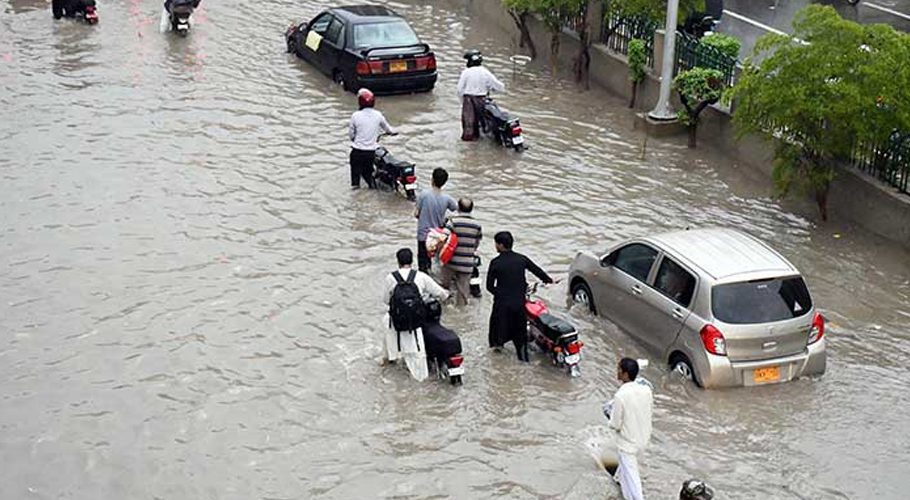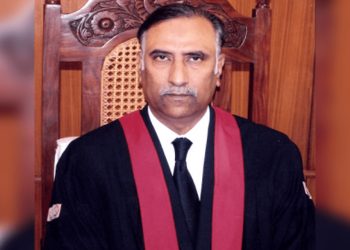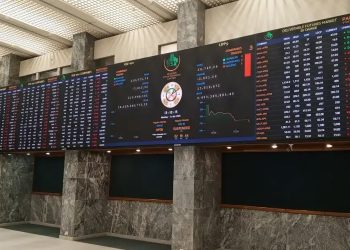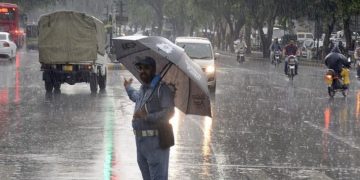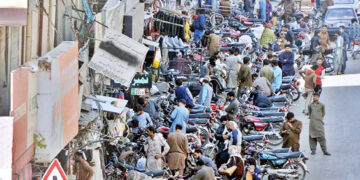Karachi faced disorder on Saturday night as heavy rainfall, accompanied by thunder and lightning, pounded various parts of the city. The downpour, labeled as a record-breaking event for February by the meteorological office, raised concerns about the potential for severe urban flooding.
For the first time in the last 44 years, Karachi’s meteorological office has registered over 50 millimeters of rainfall in February. The last instance was in 1979 when a record-breaking February rain occurred, with Karachi Airport recording 96 millimeters of rainfall.
In addition to the meteorological office’s data, specific rainfall statistics from various areas highlight the widespread impact of the deluge. Key areas affected include:
- Korangi Area: 77 mm
- Faisal Base: 75 mm
- Burns Road: 72.5 mm
- Malir Jinnah Square: 71 mm
- Port Qasim: 68 mm
- Maripur: 67 mm
- Saudabad Malir: 67 mm
- Gadap Town: 66 mm
- Millar Halt: 64 mm
- Saima Arabeen Villas: 64 mm
- Federal B Area: 63.5 mm
- New Karachi: 60 mm
- Surjani Town: 58.5 mm
- Orangi Town: 58 mm
- Baldia Town: 57.5 mm
- Model Colony: 56 mm
- Gulshan Rumi: 56 mm
- Kemari Town: 55 mm
- Nazimabad: 54 mm
- Karachi Airport: 52 mm
- Quaidabad: 52 mm
- Gulshan Hadid: 50 mm
- North Nazimabad: 49 mm
- Joystick Base: 47 mm
- Gulshan Jamal: 44 mm


On Sunday morning, residents woke up to flooded streets, homes, and hospitals as rainwater, exacerbated by sewage overflow from clogged drains, made its way into various areas of the port city. The Pakistan Meteorological Department (PMD) has predicted more rainfall throughout the day, heightening fears of widespread urban flooding if the city experiences another deluge.
Sunday morning witnessed a nightmarish traffic situation, with major arteries, including Korangi and other parts of the city, paralyzed by gridlock. Despite Sunday being a holiday, the traffic snarl persisted, further aggravating the woes of the citizens.
Areas severely affected by the relentless rainfall included Baldi Town, Orangi Town, Landhi, Korangi, North Karachi, Surjani Town, Gulshan-e-Maymar, Bahria Town, Saddar, North Nazimabad, Tower, Liaquatabad, and Nazimabad.
As the rainwater inundated the city, commuters found themselves trapped in their vehicles due to the lack of preemptive measures taken by the city administration. Despite the PMD’s prior warning of heavy rain, the authorities failed to mitigate the impact, leaving roads submerged and citizens stranded.
Power outages compounded the crisis, with areas like North Nazimabad experiencing electricity supply failures as soon as the rainfall began. Karachi Mayor Murtaza Wahab urged citizens to avoid unnecessary travel and revealed that some water pumping stations had ceased operation. He visited affected areas and directed district municipal corporations to expedite rainwater drainage efforts.
The aftermath of the storm extended beyond low-lying areas, reaching posh neighborhoods like Defence View, where rainwater infiltrated houses, causing damage to furniture and valuables. The interim Sindh government faced criticism for its lack of preparedness, as rainwater mixed with sewage infiltrated critical areas like the Jinnah Postgraduate Medical Centre and Civil Hospital.
Stagnant water also surrounded prominent landmarks, including the Sindh Assembly and the Governor House, highlighting the extent of the flooding crisis. K-Electric, the city’s primary electricity distributor, issued safety advisories, cautioning citizens against potential electrocution risks from damaged wires, poles, and other electrical infrastructure.







